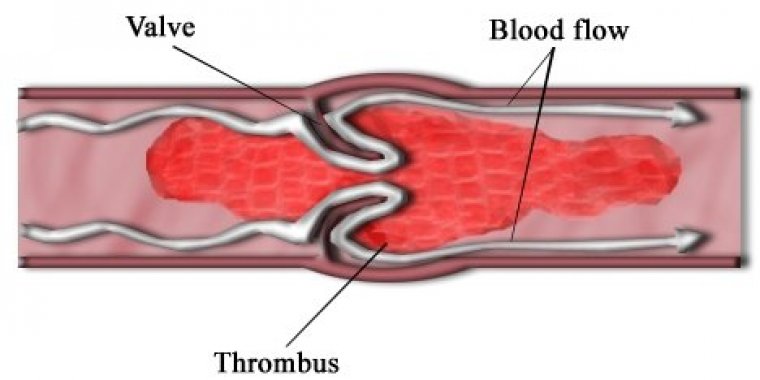| News / Science News |
How And Why Blood Clots Shrink
Researchers have used high-powered microscopy and rheometry -- the measurement of how materials become deformed in response to applied force -- to view the blood clotting process in real time and at the cellular level.

Blood clot diagram (Thrombus). ![]()
Blood clotting is a lifesaver when you're bleeding, but gone awry, it causes heart attacks, strokes and other serious medical problems. If a clot grows too big, pieces dislodged by blood flow (emboli) can block downstream blood vessels in the lungs or brain, leading to life-threatening complications such as pulmonary embolism or ischemic stroke.
Therefore, once a clot forms, even for beneficial reasons, it must shrink and disappear after wound healing starts to maintain normal blood flow.
While scientists know a lot about how blood clots form, relatively little was known about how they contract -- a slow process that takes an hour to complete.
Researchers at the University of California, Riverside and the University of Pennsylvania School of Medicine used high-powered microscopy and rheometry -- the measurement of how materials become deformed in response to applied force -- to view that process in real time and at the cellular level.
As a result of injury or inflammation, platelets in blood get activated, become sticky, and bind together and with a stringy protein called fibrin to form a mesh-like plug (the blood clot) that stops bleeding into tissue. Platelets play a central role in clot contraction, but, until now, scientists haven't been able to show exactly how they accomplish this.
Clot shrinkage occurs when platelets form hand-like protrusions called filopodia. These filopodia then attach to fibrin fibers and reel them in using the same hand-over-hand action used by a person pulling on a rope.
The platelets retain the fibrin in tiny, tightly wound bundles, therefore remodeling the fibrin mesh to make it more dense and stiff. The reeling action also brings platelets and clusters of platelets closer together, reducing the overall volume of the clot followed by complete dissolution by fibrinolytic enzymes.
The findings highlight a new role for filopodia, which were previously thought to help cells move around and sense their environment. (Tasnim News Agency)
YOU MAY ALSO LIKE





